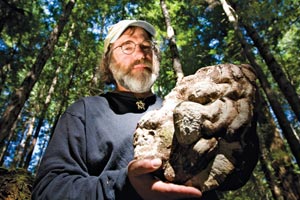
Leonardo DiCaprio with costar Jennifer Lawrence in the new film "Don't Look Up."Netflix
This story was originally published by the Guardian and is reproduced here as part of the Climate Desk collaboration.
A ghost orchid that grows in complete darkness, an insect-trapping tobacco plant and an “exploding firework” flower are among the new species named by scientists in the last year. The species range from a voodoo lily from Cameroon to a rare tooth fungus unearthed near London.
A new tree from the ylang-ylang family is the first to be named in 2022 and is being named after the actor and environmentalist Leonardo DiCaprio. He campaigned to revoke a logging concession which threatened the African tree, which features glossy yellow flowers on its trunk.

Uvariopsis dicaprio.
Lorna MacKinnon.
The highlighted plants are among the 205 new species named in 2021 by scientists from the Royal Botanic Gardens, Kew, and their collaborators around the world. All are vital parts of the planet’s biodiversity and some may provide food and medicine.
However, several are already extinct in the wild and many threatened by the destruction of forests, expanding palm oil plantations and mining. There are 400,000 named plant species and two in five are threatened with extinction. The scientists said it was a race against time to identify new plants before they disappeared forever.
In total, scientists across the world have named about 2,000 new plant species each year for at least a decade. “It’s almost bewildering that we’re still discovering so many,” said Dr Martin Cheek, at RBG Kew. “But now is our last chance to find unknown species, name them and hopefully protect them before they become globally extinct.”
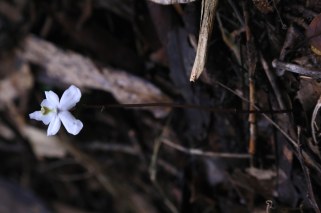
Didymoplexis stella-silvae (ghost orchid).
Johan Hermans.
The new ghost orchid is one of 16 new orchids from dense and remote forests in Madagascar, It was named Didymoplexis stella-silvae by Kew’s Johan Hermans, meaning “star of the forest” as it grows in complete darkness and has star-like flowers. It has no leaves or chlorophyll for photosynthesis and gets all its nutrients in symbiosis with underground fungi. The flower only pokes through the forest-floor humus for a day to attract pollinators, which may be ants.
Three of new orchids are already thought to be extinct in the wild due to destruction of their forest homes, including one tree-dwelling species that was likely eradicated due to the demand for geranium oil used in aromatherapy. “Sadly, Madagascar’s many unique plants are under threat from deforestation and droughts, floods, and fires caused by climate change,” said Hermans. “It really is a race against time.”
The unusual tobacco plant was among seven new species found near a truck stop in Western Australia and is covered in sticky glands that trap and kill insects, most likely as a defensive measure. “The arid parts of Australia, which include most of the continent, have been thought of as almost barren, but in recent years these poorly studied areas have yielded many new and unusual species,” said Prof. Mark Chase, at RBG Kew.
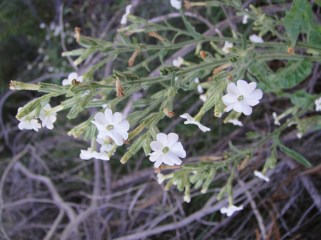
Nicotiana insecticida.
Maarten Christenhusz.
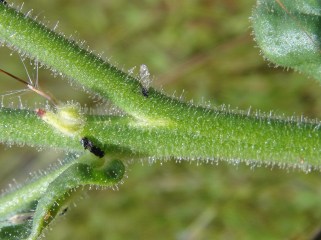
Nicotiana insecticida close-up.
Maarten Christenhusz.
“Who knows how many thousands of plant species it will be revealed in future to have likely become extinct due to palm oil plantations,” said Cheek. “It’s sickening.”
The new pink voodoo lily has a 30cm-tall flower spike and was found in a small corner of the vast Ebo Forest of Cameroon. The tree named after Di Caprio was also found in the Ebo Forest. But despite the cancelling of logging permits in August 2020 by the president of Cameroon, Uvariopsis dicaprio remains critically endangered because its habitat remains unprotected from potential future logging.
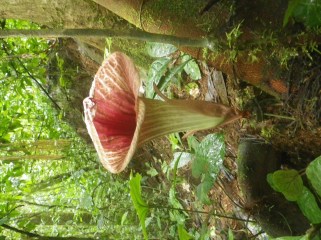
Pseudohydrosme ebo.
Xander van der Burgt.
The new fungus was first found in the UK’s Windsor Great Park under a sweet chestnut tree in 2008, but not named until now as DNA analysis of a suite of species had to be completed together. It is one of a group of unusual fungi that form mushrooms with elongated teeth under their caps, rather than gills, and are becoming rarer due to nitrogen pollution from agriculture.
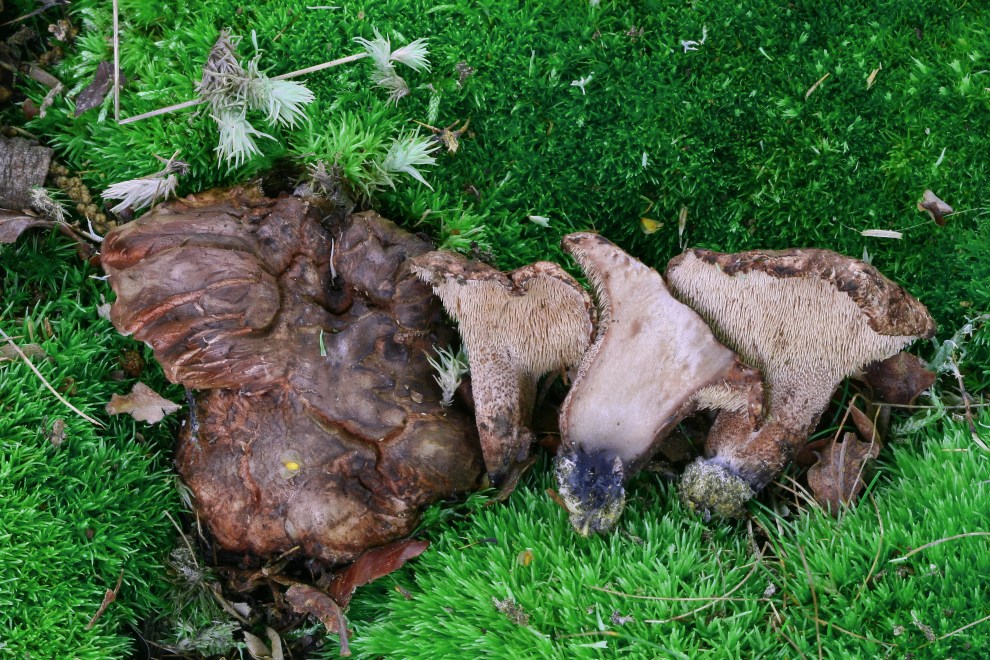
Hydnellum nemorosum.
Martyn Ainsworth.
Another new species, a blue-berried bush from the coffee family found in Borneo, took even longer to be scientifically named. It was first seen by scientists in a painting by the eminent botanical artist Marianne North, made in 1876 during a stay by the Sarawak river.
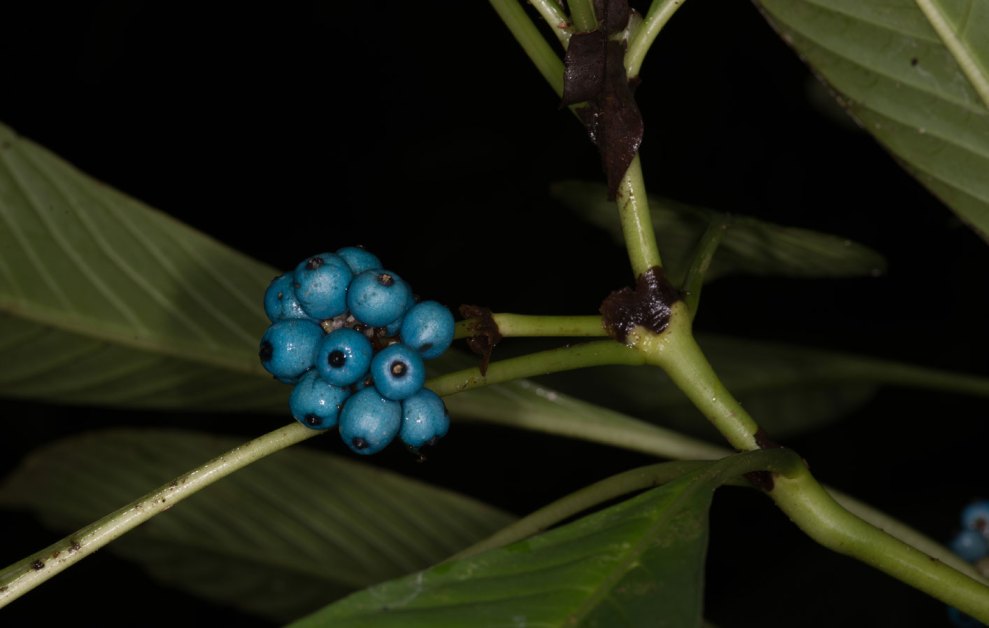
Bright blue berries of a Chassalia species. И YW Low.
One new species was discovered not in the wild, but in the laboratory. The microscopic fungus was found lurking in a wild banana seed from Vietnam kept at Kew’s Millennium Seed Bank in Sussex. Fusarium chuoi, which has a coral colour and a velvety texture, is an “endophyte”, a fungus that lives inside a plant without causing it any visible harm. Distinguishing these from pathogenic fungi is crucial for protecting plant health, the scientists said.
Among the other new species highlighted were a periwinkle from the Andean valleys in Bolivia, which has kiwi-like fruits that are edible when roasted and may also have medicinal properties and five pretty Cape primroses from the Democratic Republic of the Congo that are threatened by copper mining.
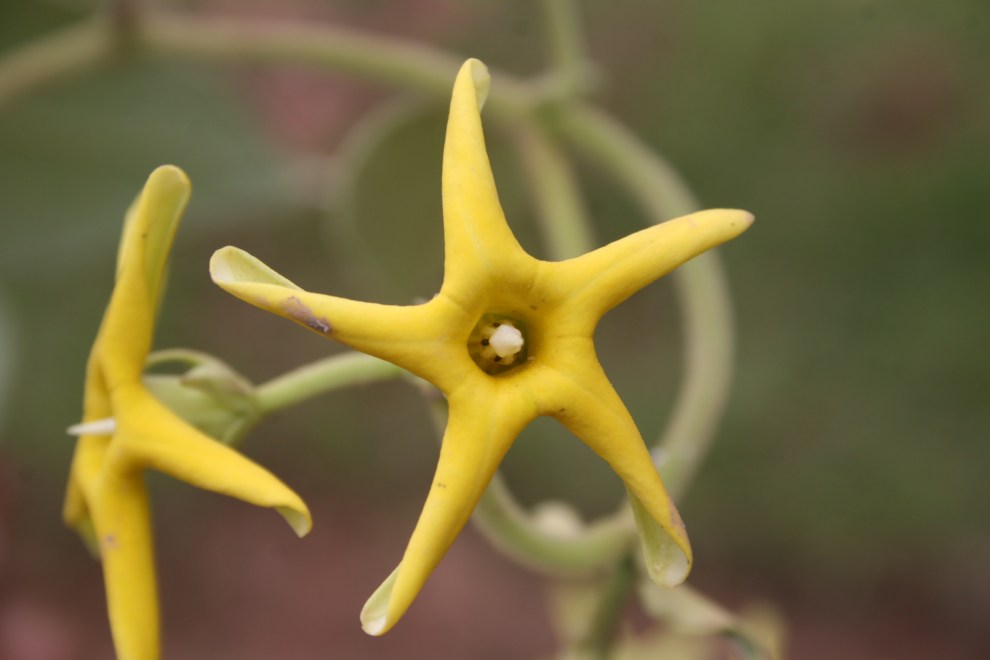
Philibertia woodii.
Fernando Zuloaga.
“So many of our medicines come directly from plants, or are inspired by compounds that come out of plants,” said Cheek. “If we make species extinct before we can even look at what chemicals are inside them, isn’t that bonkers?”



